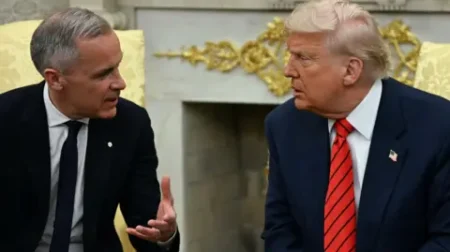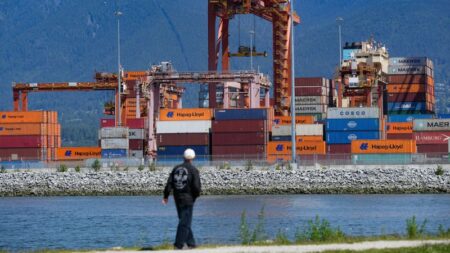As the deadline approached for President Donald Trump’s “Liberation Day” tariffs, the White House found itself under significant pressure to finalize trade agreements. With only a week and a half remaining in the previously announced 90-day pause on these tariffs, concerns about the looming tariffs intensified. The administration had touted these negotiations as crucial for establishing certainty in a nervous economy that showed signs of instability.
Despite claims of imminent trade agreements, only two frameworks had been solidified before the July 9 deadline, a far cry from the numerous anticipated deals. During recent months, the Trump administration made announcements regarding negotiations with 18 key partners, aiming to lower trade barriers. However, the timeline for these negotiations kept shifting, fueling doubt among economists and stakeholders alike.
In late April, President Trump had firmly stated in an interview with Time magazine that he had successfully brokered a staggering 200 trade deals. Yet, shortly thereafter, he conceded that completing such a high number of agreements within the tight schedule was impractical. During a press briefing, he stated, “We have 200 countries; we can’t do that,” indicating a need to set clear terms for countries unwilling to negotiate.
This notion of imposing new tariffs on countries that fail to reach agreements had been circulated for months. Initially, Trump signaled that tariffs would be set shortly after the ongoing negotiations, which did not yield the expected outcomes. On April 23, he indicated that tariffs would be implemented for those reluctant to settle new terms in the weeks that followed. However, as the timeline extended, it became increasingly uncertain whether any significant agreement would come before the deadline.
In ongoing discussions, high-ranking officials within the administration, including Commerce Secretary Howard Lutnick, consistently promised an influx of deals on the horizon. He suggested that a series of announcements detailing new agreements would be forthcoming. However, despite these optimistic forecasts, actual developments remained sparse.
Interestingly, amidst the uncertainty, key figures from the administration shifted their statements regarding the urgency of the deadline. On one hand, White House press secretary Karoline Leavitt asserted that the deadline was not critical, a sentiment echoed by Treasury Secretary Scott Bessent, who hinted that negotiations could continue beyond the prescribed date. Bessent even indicated that major trade agreements could potentially be finalized by Labor Day, pushing back expectations of swift resolutions.
Meanwhile, President Trump communicated a firmer stance on trade policy, announcing the termination of trade talks with Canada over its digital services tax issue. This development suggested a more aggressive approach to tariffs, with the anticipation that new tariffs would be imposed within the coming week. Furthermore, Bessent suggested that as many as 20 countries could revert to higher tariff rates starting July 9, with previous tariffs having risen as high as 50%.
According to economists, the ongoing uncertainty surrounding the tariff schedule is detrimental to the U.S. economy, which indicates potential vulnerabilities. While consumer sentiment had shown signs of improvement, the overall economic landscape remained mixed. Although consumer confidence had risen by 16%, as reported by the University of Michigan, this optimism did not translate into spending. The Commerce Department reported a concerning decline in consumer spending for the first time since January, raising alarms about a potential downturn.
Challenges included inflationary pressures, slowed job growth, and weakening retail sales, factors critical to the U.S. economy, wherein consumer spending constitutes two-thirds of overall economic activity.
The outlook for the economy was further complicated by speculation that retailers would pass on tariff-increased prices to consumers. With the recent inflation reports indicating rising costs, experts projected that the calmer inflation experienced earlier in the season was likely a precursor to more significant increases as the realities of the tariffs began to manifest within the economy.
Even with tax cuts from Trump’s domestic policies potentially alleviating some pressures, the trade war posed risks of retaliatory measures from essential trading partners, raising fears of an economic slowdown. Consequently, the urgency for new trade deals was paramount. As the ongoing economic stability hinted at underlying issues, further delays could threaten this fragile situation and promote an atmosphere of uncertainty detrimental to consumer confidence and spending.
In summary, the complexities surrounding the negotiations and the new tariffs underscored a critical juncture for the U.S. economy amid evolving trade policies. The pressure on the administration to finalize deals has never been greater as stakeholders watch closely for their implications on economic health, positioning trade issues at the forefront of national debates.











